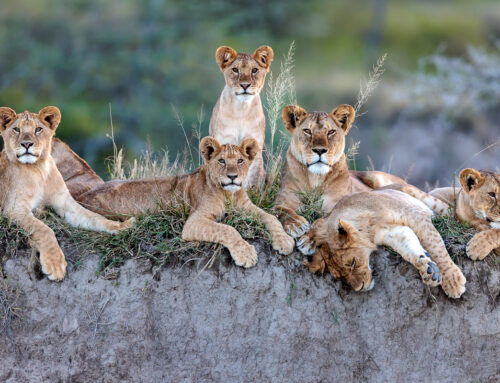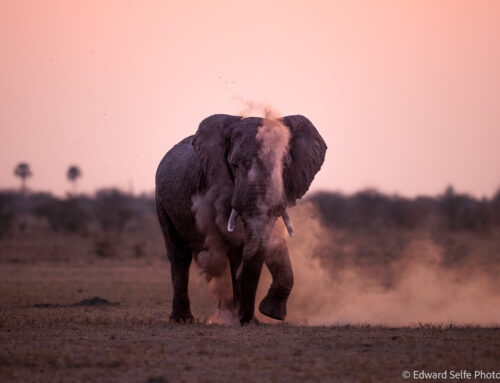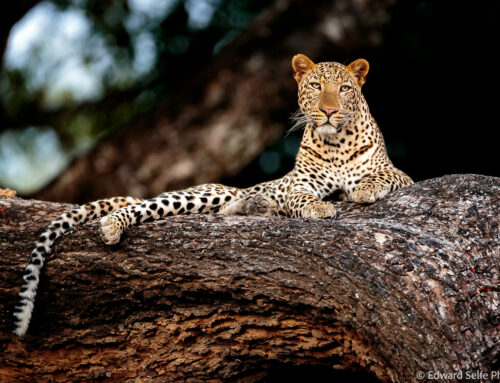In this post, I’m going to look at the technique of motion/panning blur. This is a principle which is simple in concept, but tricky to master in practice….but the best part is that it opens up a world of opportunities!
The principle of motion blur images is intentionally to slow down your shutter (a long exposure) to capture the movement of your subject against the background. This can be achieved by reducing your ISO and/or closing down your aperture to limit the amount of light and give a slow shutter speed. How fast/slow the shutter speed should be depends on how fast your subject is moving and how much blur you want to introduce – experiment with speeds anywhere between 1/2 sec and 1/100 sec. Make sure to pan (follow) with the movement of your subject, trying to maintain a steady horizontal motion.
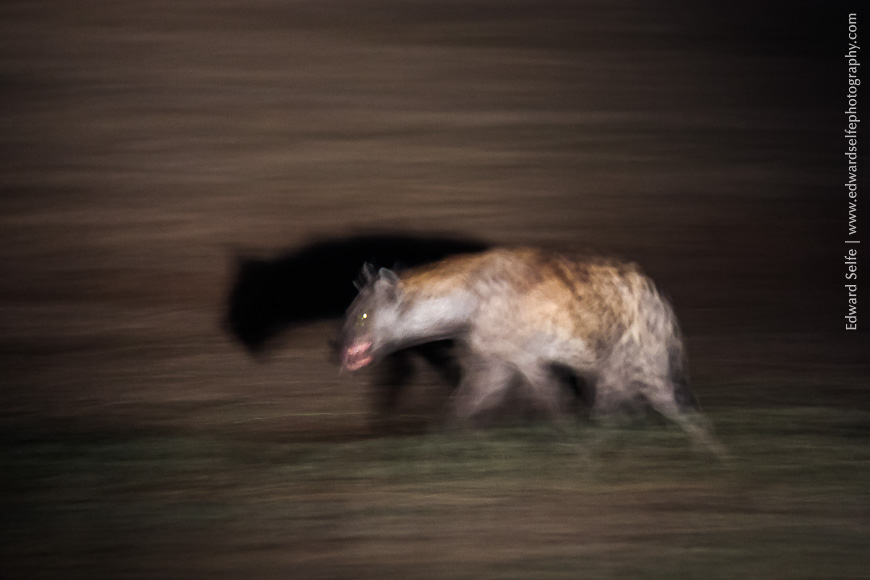
In the image of a hyaena above, I have considerably lengthened the shutter speed by reducing the ISO from normal night-time settings of 3200 or 6400 to ISO 400. From an unremarkable situation, it has created a pleasing image of a skulking hyaena on the move at night.
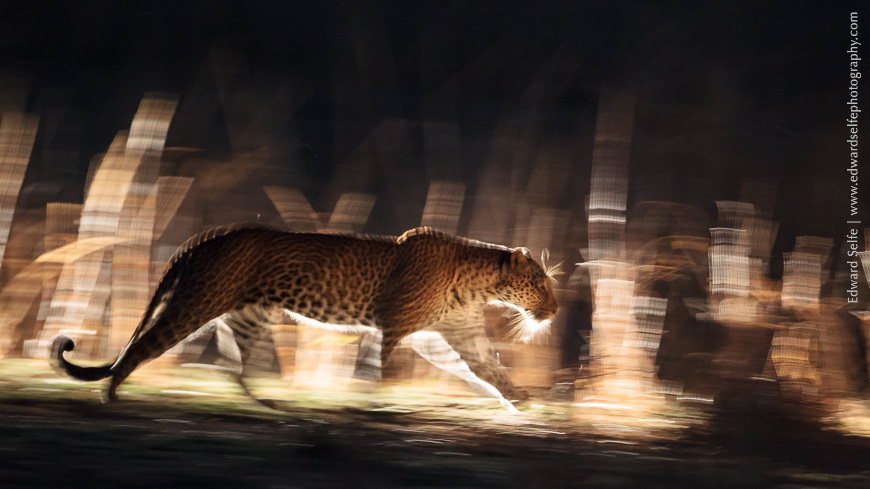
This leopard image was also created at night, using only the headlights of the vehicle opposite us. So, although the ISO is quite high, and the aperture is open wide, the very limited light meant that the shutter speed was slow. 1/8 sec has not allowed much movement of the leopard to show, but it has blurred the grasses in the background which introduces movement to the image.
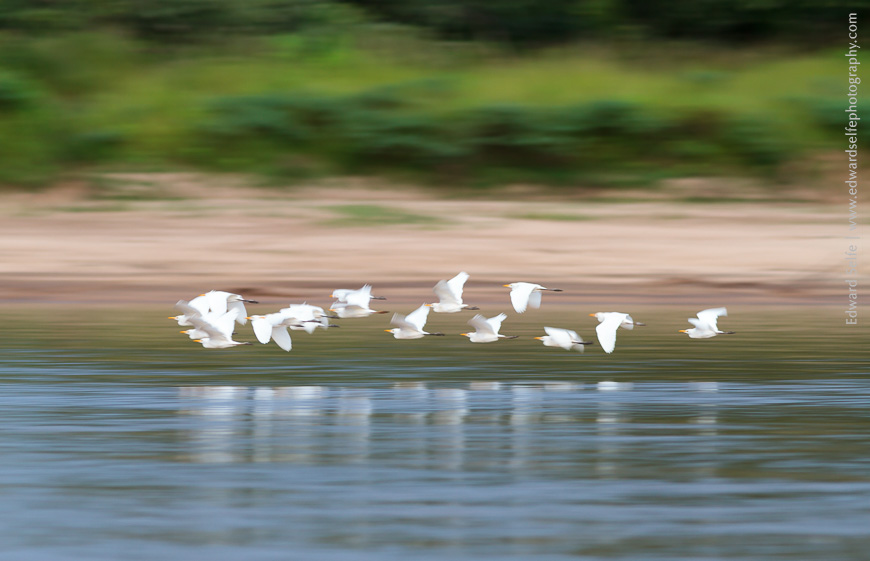
This technique works well during the day too, although of course, getting a very slow shutter speed in daylight is harder than at night. As a flight of Cattle egrets approached our boat, I chose the lowest ISO I could and saw that the resultant shutter speed was 1/60 sec. For birds – which move faster than most other creatures – this will generate a pleasing amount of blur.
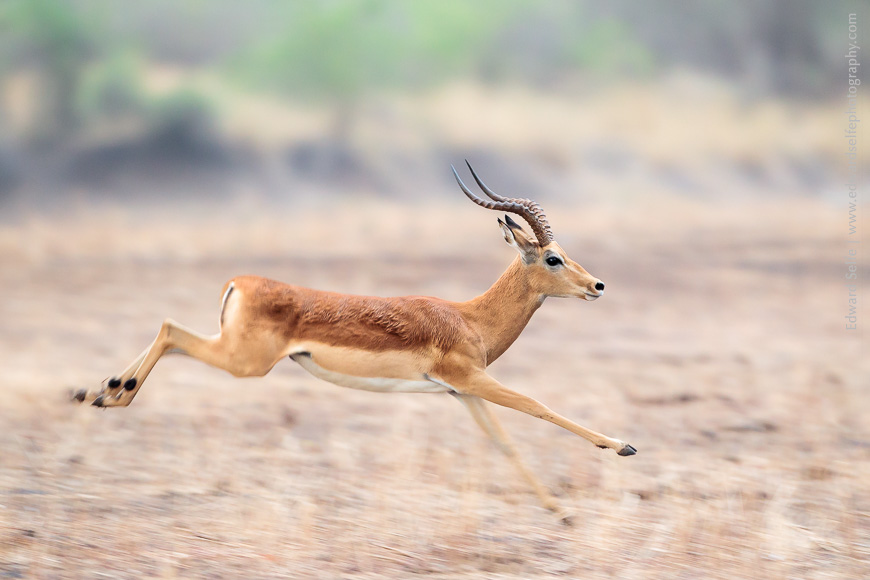
For best results, try to choose occasions when animals are moving in a relatively predictable way. Impalas will often cross a plain in a long line and, if spooked by something, will run singly to the nearest cover. This may give you a series of chances.
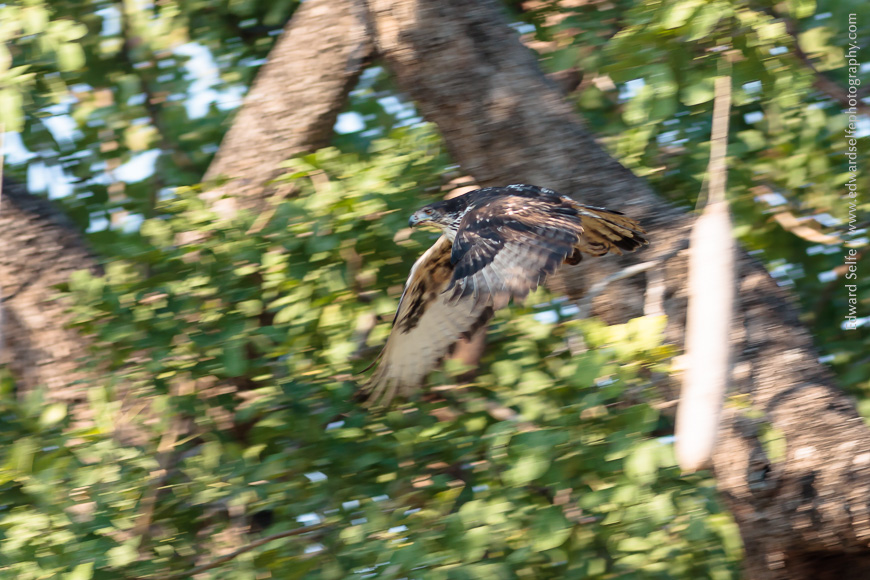
It is certainly the case that it doesn’t always work! I had been watching this African Hawk Eagle for some time and I suspected that it would fly off after finishing its meal of a Swainson’s Spurfowl. But the light was dappled and I knew it would result in a poor image, so I tried a panning blur shot; in this case, my shutter speed was too fast – I think – and the background was not sufficiently blurred. But….if I had slowed the shutter speed, the bird might have been too blurred…..perhaps this one was just not meant to be!
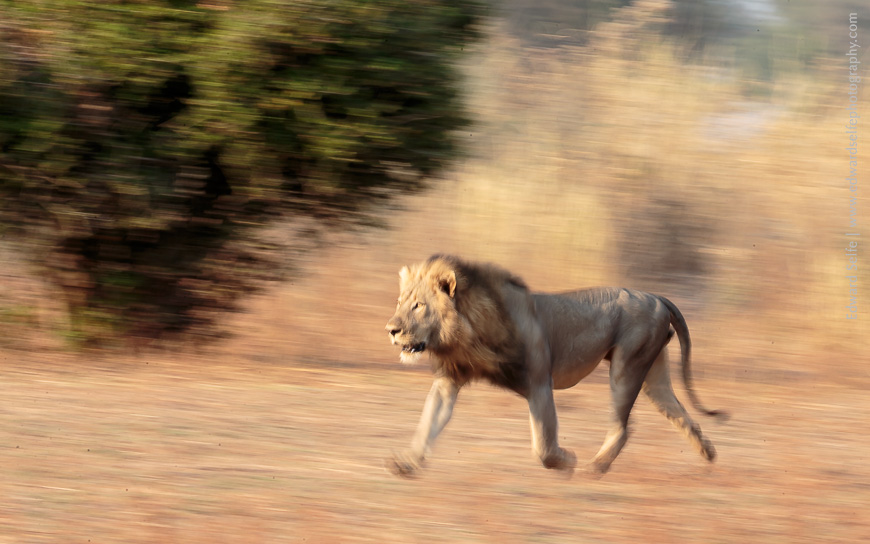
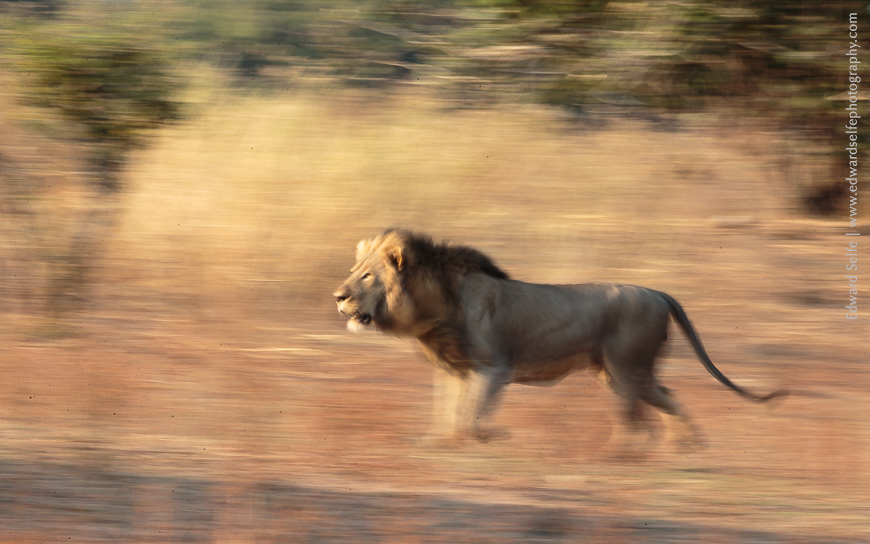
It’s worth taking several images when trying this technique as the animal will be moving differently in each interval of the shutter duration. Sometimes the head will be relatively still, and at other times not. The legs will also be in different positions. Consider the two images above, taken with identical settings (note the very small aperture and low ISO to control the light). The lion’s face is sharp in the first image, whereas the legs are more blurred in the second…..neither is correct, but they are simply different effects.
A while ago, I talked about how much post-processing is ethical for wildlife photographers. The reason I mention this now is that I’m pretty clear that post-processing in wildlife photography should be about tweaking the RAW image to better represent what you saw, not to create what was not there. Motion blur is a great way to introduce something new to your photography portfolio, and its use can generate inspiring images when the lighting or wildlife conditions are not optimal.
Try it out, and post your creations via links in the comments section below! Or if you already have motion blur images in your portfolio, share them below for us to enjoy!

